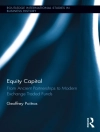As the members of the "baby boom" generation – people born between 1946 and 1964 – approach retirement, the demographic profile of the U.S. workforce will undergo a substantial shift: a large number of older workers will be joined by relatively few new entrants to the labor force. According to the Census Bureau, while the number of people between the ages of 55 and 64 will grow by about 11 million between 2005 and 2025, the number of people who are 25 to 54 years old will grow by only 5 million. This trend could affect economic growth because labor force participation begins to fall after age 55. In 2007, 91% of men and 75% of women aged 25 to 54 participated in the labor force. In contrast, just 70% of men and 58% of women aged 55 to 64 were either working or looking for work in 2007. The rate of employment among persons age 55 and older is influenced by general economic conditions, eligibility for Social Security benefits, the availability of health insurance, and the prevalence and design of employer-sponsored pensions. Labor force participation among people 55 and older may, for example, be affected both by the trend away from defined-benefit pension plans that offer a monthly annuity for life to defined contribution plans that typically pay a lump-sum benefit. The declining percentage of employers that offer retiree health insurance also may result in more people continuing to work until they are eligible for Medicare at 65.
Leonard E Axley
Older Worker Trends [PDF ebook]
Older Worker Trends [PDF ebook]
Buy this ebook and get 1 more FREE!
Format PDF ● Pages 116 ● ISBN 9781614704720 ● Editor Leonard E Axley ● Publisher Nova Science Publishers ● Published 2018 ● Downloadable 3 times ● Currency EUR ● ID 7228418 ● Copy protection Adobe DRM
Requires a DRM capable ebook reader












